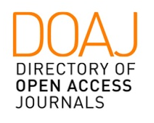Boltzmann and the Heuristics of Representation in Statistical Mechanics
DOI:
https://doi.org/10.24117/2526-2270.2020.i8.07Keywords:
Boltzmann, Statistical Mechanics, Heuristics of RepresentationAbstract
Boltzmann’s work in physics has been studied almost always opposing a strictly mechanical approach of the 2nd law of thermodynamics – attributed to his first works in kinetic – molecular gas theory (1866-1871) – to a probabilistic approach, built and developed in his later works (1872-1884). The analysis of the use of these different approaches covers a spectrum of positions ranging from the recognition of an intrinsic incoherence to Boltzmann’s thinking, go through a radical change in the development of his work, until the adoption of pluralistic strategies as justifications for their methodological options. The purpose of this paper is to explore Boltzmann’s research program from the view of what we characterize as heuristics of representation, highlighting the tools used he used for the solution of problems related to thermal phenomena. We will argue that what in the standard historiographical analysis is understood as a radical turn in Boltzmann’s work – probabilistic “turn point”, that is, the use of an overtly statistical terminology (combinatorial formalism, 1877) instead of a kinetic language (kinetic formalism, 1872) in the analysis of evolution toward the thermal equilibrium (Maxwell’s distribution) – could be better understood as a change of representation within the same conceptual framework.
Downloads
Published
Issue
Section
License
Copyright (c) 2020 Cássio Laranjeiras, Jojomar Lucena , José Chiappin

This work is licensed under a Creative Commons Attribution 4.0 International License.











